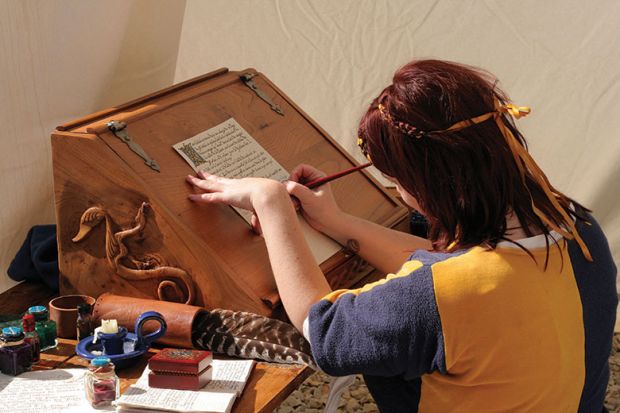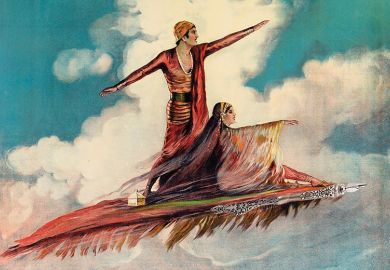This book begins with a question: “Were there any women writers in the early Middle Ages?” It is a question that anyone who is interested in medieval literature, and particularly those who teach it, will have asked themselves or been asked countless times. On courses and in anthologies of medieval women’s writings, the names of later writers such as Christine de Pizan, Julian of Norwich and Margery Kempe usually take centre stage. Those of us who are trying to diversify our curricula and our research act as evangelists for these fascinating authors, even as we bemoan the paucity of any earlier examples. Trying to find any women writers before the Norman Conquest can feel like an impossible task.
Happily for us, Diane Watt clearly likes a challenge and has now done a lot of the hard work for us. Her groundbreaking – and I don’t use that word lightly – study suggests that yes, there were many women writers in the early Middle Ages. However, they are far from easy to find and we need to embrace new reading strategies in order to discover and resurrect them. Watt not only outlines a number of these strategies for us, she also puts them into practice with a number of revealing case studies. One of the main arguments of the book is that monastic writers had a tendency to “overwrite” female authorities and women’s texts. This might involve revising their narratives or replacing their oral or written accounts without acknowledging their sources. This practice is not necessarily a malicious one; the intention often seems to be to preserve or modernise, not just to silence or erase.
However, regardless of motive, the outcome remains the same. A gap where once women’s words, or the “underwriting” (as Watt terms it), might have been. Watt takes painstaking care with traces and fragments to uncover and discern this “underwriting” in a number of male-authored texts, the most famous example being Bede’s Ecclesiastical History. In so doing, she brings the important role women played in the literature of the period to the surface and sketches out a methodology for other scholars to follow so as to discover other examples.
So, were there any women writers in the early Middle Ages? Never again can we simply answer “no” to this question, or even “Possibly, but so little has survived, it is impossible to know for sure.” By reading between the lines of canonical, male-authored texts, and by including letters, female-authored saints’ lives and records of female patronage in her study, Watt makes clear that women’s literary communities were thriving in the early Middle Ages. She peers through the gaps in order to uncover them, and she urges us to do the same. This is real literary detective work in action, and it paves the way for more of the same. The names of Leoba, Eve of Wilton and Hugeburc may not mean nearly so much to us now as Christine de Pizan, Julian of Norwich and Margery Kempe. However, thanks to Women, Writing, and Religion, I suspect they soon will.
Hetta Howes is lecturer in medieval and early modern literature at City, University of London.
Women, Writing, and Religion in England and Beyond, 650-1100
By Diane Watt
Bloomsbury, 252pp, £70.00
ISBN 9781474270625
Published 12 December 2019
后记
Print headline: The women behind the words




